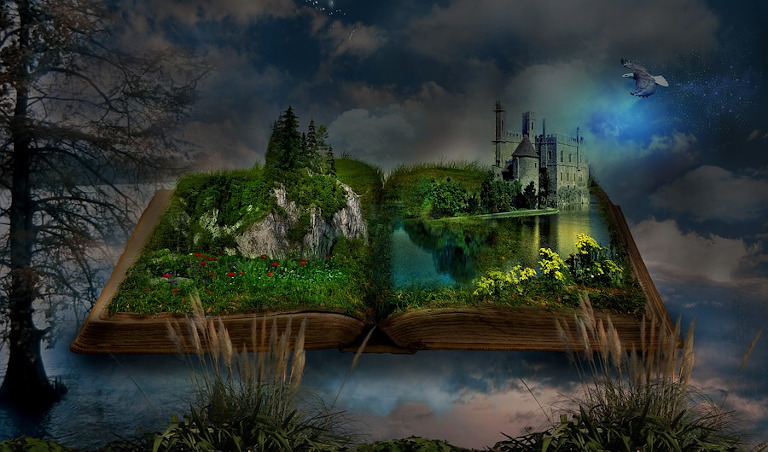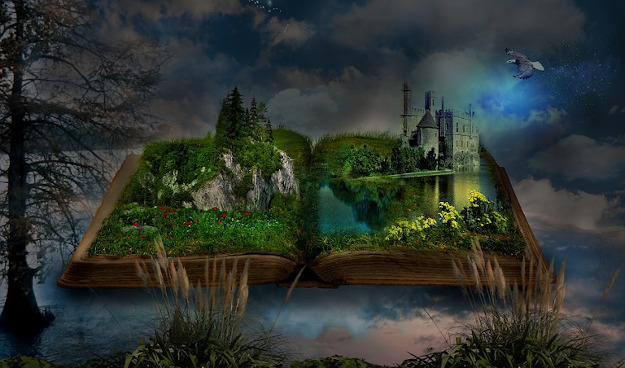
Thanks to the smashing success of book/movie and book/tv combinations like Harry Potter, Lord of the Rings, Game of Thrones, The Hunger Games and many others, fantasy fiction is alive and thriving. If you’ve decided you want to write a fantasy novel, you’ve chosen a good genre. And although science fiction has done quite well at the box office, when it comes to novels fantasy has always outsold science fiction by a long shot. But having chosen fantasy as the main genre for your novel is only the first step. Now you have to figure out which fantasy subgenre is right for your novel – and there are a lot of subgenres from which to choose. This article will walk you through the many subgenres you might choose for your fantasy novel.
Defining the Fantasy Genre
It’s worth taking a moment here to outline what makes a novel fall into the fantasy genre. It’s easy enough when you think about stories full of sorcery, swords, dragons, castles and the like. But there are lots of novels that don’t have a single sword or dragon that still qualify as fantasy. But it does need to have some form of magic or supernatural phenomena at its core.
The defining main feature of fantasy is its impossibility of existing in the real world. Science fiction seems similar in that regard, except that it’s about what could happen, typically in the future, as technology continues to advance. In that sense, science fiction is about what could be, while fantasy is about the impossible. The similarities between fantasy and science fiction come from the fact that both fall into a category called “speculative fiction.”
When a fantasy novel is set in the “real” world, the author adds in various elements that simply wouldn’t be encountered in real life, asking readers to imagine if this is how things were, such as the magical society in the Harry Potter books existing alongside the “real” world as we know it. The other alternative, of course, is to set your fantasy novel in an entirely different world that is completely made up from scratch, such as the world presented in the A Song of Fire and Ice books (otherwise known as Game of Thrones).
Before Your Fantasy Subgenre, Decide Between Adult and Young Adult
Before diving into some of the many different fantasy subgenre options, you should also think about whether you want your novel to be young adult (YA) or adult fantasy. YA fantasy fiction is a hot ticket right now, and when YA fantasy novels are really good, plenty of adults will end up reading them as well. In fact, half of all YA readers are adults!
Because YA fantasy novels are geared primarily towards a readership ranging in age from 12-18 (give or a take a couple years), the main character(s) should also fall into that age-range. You also need to keep your writing age-appropriate. You can have plenty of romance, but should avoid full-on sex scenes. The same holds true for language in terms of profanity, and for the violence involved. A good way to think about this is to imagine your novel being turned into a movie. If it would receive an R rating, then it’s not YA, but if it would be given a PG or a PG-13 rating, then you’re good to go for the YA designation.
Examples of YA fantasy include the Harry Potter books by J. K. Rowing, The Hunger Games trilogy by Suzanne Collins, and the Mortal Instruments series by Cassandra Clare. And as you probably know, Harry Potter and The Hunger Games became smash movie hits at the box office, and the Mortal Instruments became a successful television series called Shadowhunters. Can you say ka-ching?
Choose Your Fantasy Subgenre
It’s important to realize that any given fantasy novel can arguably be placed in more than one of the subgenres. The lines separating them can get very blurry. But you should decide which one of the subgenres is going to be the primary flavor of your novel. Here are your options:
- High Fantasy is the subgenre that many think of as “traditional” fantasy, and especially if it’s a one-off novel. You’d want magicians, sword fighting, dragons and other mythical/magical creatures, and all set in a completely made-up world. Examples include The Hobbit by JRR Tolkein and Tigana by Guy Gavriel Kay.
- Epic Fantasy has all the same elements as high fantasy, but is much bigger than a one-off story. Examples include The Lord of the Rings trilogy by JRR Tolkein and the A Song of Fire and Ice series by George RR Martin (Game of Thrones).
- Heroic/Sword and Sorcery Fantasy is a subset of high and/or epic fantasy that is really focused on the traditional hero going into battle, sometimes to save a damsel in distress or a whole kingdom. There is big emphasis on the action aspect of fantasy. Examples include Conan the Barbarian by L. Sprague de Camp and Elric of Melniboné by Michael Moorcock.
- Medieval/Arthurian Fantasy is similar to high fantasy but draws its main inspiration from the Medieval period of history with all its myths and legends. Arthurian fantasy is specifically set in the world of King Arthur’s legendary Camelot, giving fresh adventures to that world’s characters (Merlin, Lancelot, etc). Examples include The Once and Future King by T. H. White and The Mists of Avalon by Marion Zimmer Bradley.
- Low Fantasy does not refer to the quality of the story, which is why “modern fantasy” or “contemporary fantasy” are better names for this subgenre, because it is very popular right now. This is where the setting is the “real” world or something like it, but then characters experience magic, supernatural powers, mythical creatures and so on existing right there in their real world. Examples include the Harry Potter books by J. K. Rowing, the Twilight books by Stephenie Meyer, and the Mortal Instruments series by Cassandra Clare. It is also sometimes called “indigenous fantasy” because it’s contemporary to the time period of the author.
- Urban Fantasy is a subset of low/contemporary fantasy. What sets it apart is how the densely-populated city or metropolis in which it is set is front-and-center, almost being a character in and of itself. It would not be wise to attempt writing a novel in this subgenre without having lived in a big city. You have to be able to capture the gritty aspects of city-life to get this one right.
- Paranormal Fantasy is another subset of modern or contemporary fantasy in which the modern world has various supernatural creatures (vampires, werewolves, fairies, ghosts, angels, demons, etc.) and/or people with paranormal powers. Examples include Angelfall by Susan Ee and the Twilight books by Stephenie Meyer
- Portal Fantasy, as the name implies, is when characters find or stumble upon a portal or gate that gives them to access to an alternative fantasy world, the flavor of that world could then fall into any subgenre that tickles your fancy. Examples include Alice in Wonderland by Lewis Carroll, The Chronicles of Narnia by C. S. Lewis, and The Neverending Story by Michael Ende.
- Romance Fantasy can really cross all these different genres if your story is going to put falling in love and being in love front-and-center, then this might be the subgenre for you. Note that some think of romance fantasy as restricted to high fantasy romance because modern fantasy romance tends to be called paranormal romance.
- Fairy Tale Fantasy is a good subgenre if you want to take a classic fairy tale and blow it up into a full-length novel to add your own twists and turns to it, and put it in the setting of your choice, such as a modern setting. Examples include Ella Enchanted by Gail Carson Levine and Beauty: A Retelling of the Story of Beauty and the Beast by Robin McKinley.
- Comedic/Comic Fantasy as you might imagine puts humor front-and-center. This can be a tricky subgenre to pull off, so if you want to learn from its master, read the Discworld books by Terry Pratchett. Another great example is The Princess Bride by William Goldman. Yes, there was a book before the movie. Luckily, the book’s author was the one hired to write the screenplay for the movie, which is why both are fantastic.
- Grimdark Fantasy is on the grimmer, darker side and often makes anti-heroes its main characters, or at least people with very dubious morals, in contrast to most high fantasy with its hyper-moral heroes who never do wrong. Examples include The Black Company by Glen Cook and The Lies of Locke Lamora by Scott Lynch. If you more specifically blend in elements of horror, people might call it gothic fantasy or dark fantasy.
- Historical Fantasy blends together historical fiction and fantasy by taking a real-world event or time-period and layering in fantasy elements to make an alternative version of history. Examples include Outlander by Diana Gabaldon and His Majesty’s Dragon by Naomi Novik.
This brief treatment of different fantasy subgenre options is not exhaustive, and new ones do keep popping up, but it gives you enough of a guide to figure out which one(s) will apply to your novel. After choosing your primary fantasy subgenre, your next step in writing a fantasy novel will be to figure out the broad strokes of a story idea, so stay tuned for an article on that topic!
Try tooleybook, the free tool created for writing books. It takes less than 30 seconds to create an account and start writing.
With tooleybook you can view timelines, chapter purpose, word count, track time and place, tag scenes, move and organize scenes and more...More Info


